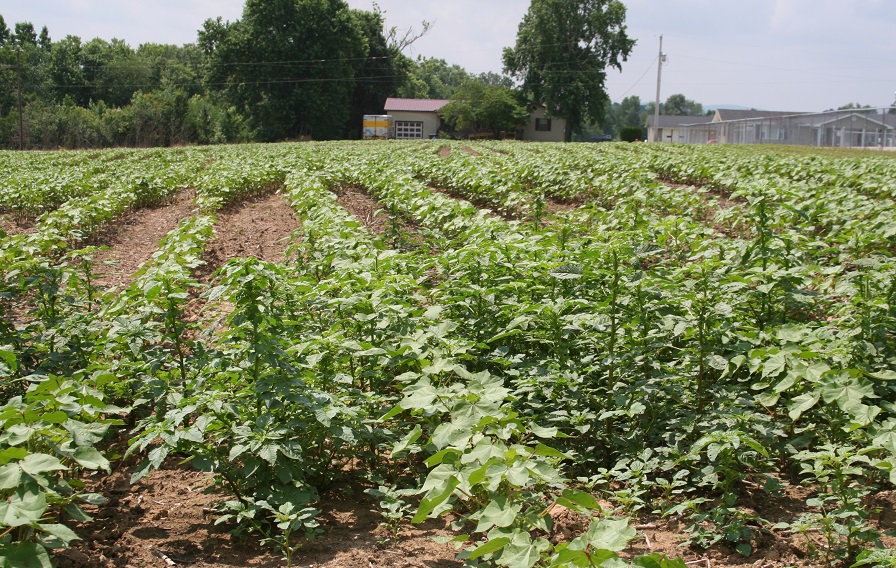Plexus: Market Momentum Continues to Stall
New York futures have come under pressure since our last report (February 19), with May dropping 146 points over the last two weeks to close at 63.23 cents on March 5.
The market has recently run into significant fundamental and technical headwinds that have forced it to retreat. Since posting an intra-day high of 66.24 cents on February 26, the market has slipped more than 300 points in a steady decline that doesn’t seem to be over yet.
Speculators have been the driving force behind the market’s 800-point advance from 58 to 66 cents, but they couldn’t possibly keep buying at a pace of nearly two million bales a week. The latest available CFTC data tells us that speculators bought no less than 7.6 million bales net in the four weeks between January 27 and February 24, thereby turning a 2.95 million bales net short into a 4.66 million bales net long position.
Although speculators have held much larger positions in the past – with the 11.6 million bales net long in early 2008 holding the record – momentum has clearly been stalling, which tells us that latest wave of buying may be over for now.
The trade has been a willing seller into the rally, growing its net short position by around 8.0 million bales during the above mentioned four-week period – from 2.0 million bales net short to 10.0 million bales net short. Judging by the still large open interest in current crop futures, we estimate that at least 70 percent, or around 7.0 million bales, of this trade net short position belongs to May and July.
We currently have a situation in which speculators have stopped buying, and the trade is not in any great hurry to buy back its short position. This has created a vacuum, resulting in this slow but steady decline that we have witnessed over the past few sessions. The low trading volume confirms that it hasn’t been heavy selling pressure, but rather a lack of buying that caused prices to retreat. In order for the market to halt this decline, we need to see physical business pick up. So far, there is no evidence of that, which means that prices may have to go lower in search of a bottom.
U.S. export sales have been rather disappointing over the last three weeks, with cancellations of Upland and Pima outpacing new sales for the current marketing year by 39,400 running bales. Fortunately, new crop sales have remained positive during this three-week stretch, with a combined 117,000 running bales in net new sales, which means that U.S. export commitments still managed to increase overall.
Total commitments for the current marketing year therefore remain at around 9.9 million statistical bales, whereas sales for shipment August onwards are now at 0.8 million statistical bales. Shipments were about 30,000 bales above the pace needed to reach the current USDA estimate, averaging 288,000 bales a week over the last three reports.
Another positive is that there were still a lot of different markets interested in U.S. cotton. Despite sizeable cancellations by China and Turkey, new sales went to at least 18 different buyers over these past three weeks, which is a sign that U.S. machine-picked cotton remains in demand.
Despite the recent setback on the export front, we shouldn’t lose sight of the fact that most U.S. high grades are probably committed at this point. Total supply of Upland cotton – which includes beginning stocks – amounted to around 17.7 million statistical bales this season, of which an estimated 13.5 million statistical bales have so far been committed to domestic and foreign mills. Additionally, domestic mills will need around 0.9 million bales to tie them over to new crop, and foreign mills have already booked 0.8 million bales for August onwards, of which an estimated 0.6 million bales will likely be shipped from current crop stocks.
This would leave just 2.7 million bales of Upland cotton still available. The big question, however, is how much of this leftover stock is made up of tenderable grades? Classing data tells us that only 68 percent of the crop consisted of tenderable qualities, which, based on a total Upland crop of 15.5 million bales, translates to roughly 10.5 million bales. Let’s further assume that beginning stocks contained another 1.5 million bales in tenderable grades, which would bring the total amount of deliverable qualities to 12.0 million bales.
In other words, we have around 12.0 million statistical bales of tenderable qualities against existing current and new crop commitments of an estimated 15.0 million bales. This means that if 80 percent of all commitments consisted of tenderable qualities, there would be no deliverable bales left for sale. At 75 percent, there would still be 750,000 bales available, and at 70 percent, the number would increase to 1.5 million bales.
However, considering that the expiring March contract wasn’t able to attract any additional certified stock to the board despite moving into the mid-60s leads us to believe that the available supply of tenderable grades is indeed quite scarce.
So where do we go from here?
With the short-term trend and momentum turning negative, we need to brace ourselves for some spec long liquidation as sell stops are about to get triggered. However, the trade is short a sizeable amount of current crop futures and will likely use dips to get out of basis-long positions and to fix remaining on-call sales. We therefore expect to see some volatile back-and-forth action in the low 60s over the coming weeks as the market works through this corrective phase.
In the medium-to-longer term, we still see the possibility for further rallies in the futures market, since tenderable grades will likely remain in short supply until new crop brings relief. And that’s still a long way down the road.
THE ABOVE IS AN OPINION, AND SHOULD BE TAKEN AS SUCH. WE CANNOT ACCEPT ANY RESPONSIBILITY FOR ITS ACCURACY OR OTHERWISE.
Source – Plexus








